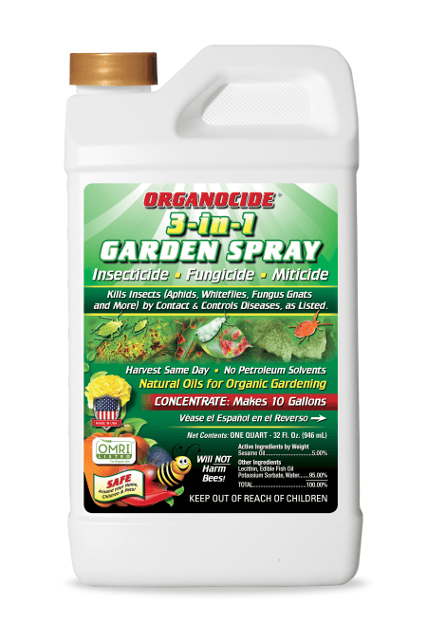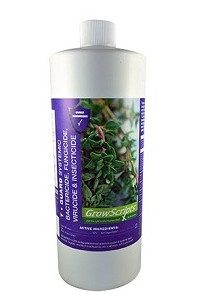How To Fight Citrus Greening Disease: The Latest!
It goes without saying that citrus greening is probably the most dreaded citrus disease infection to date -- even worse than canker.
It is a bacteria infection called Huanglongbing (HLB), that is spread by the tiny Asian citrus psyllid insect and others. Once a tree is infected, the bacteria goes systemic and slowly kills the tree.
"Huanglongbing" translates to "Yellow Dragon Disease". There has been no recognized successful treatment or cure -- until now: maybe.
We're not the experts on this, but it is so important to us that we've made great effort to research the latest reports from all the experts we can find. This is the condensed version of what we've learned.

Gnat-sized Asian citrus psyllids are often found first
on new growth in the interior of the tree.
image credit: USDA / APHIS photographer R. Anson Eaglin
How Huanglongbing Kills
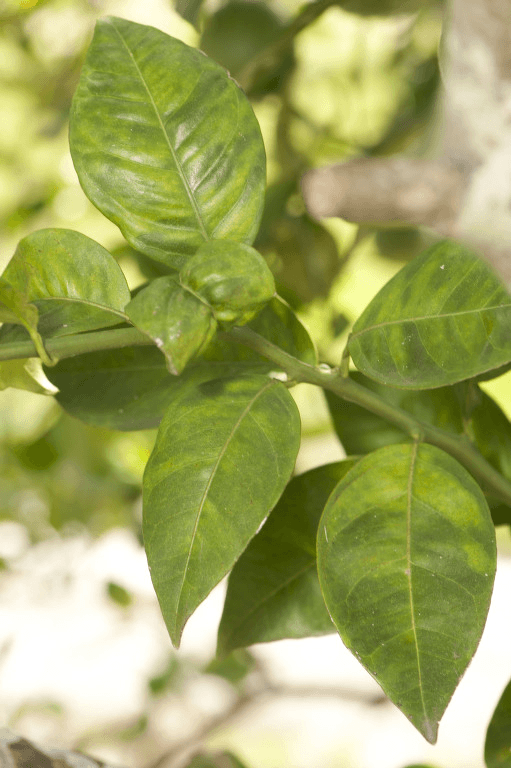
These leaves show the classic
blotchy mottle symptom of citrus greening.
image credit: USDA / APHIS photographer R. Anson Eaglin
Nutrients are delivered from the roots of a plant to the tips of the leaves through a vascular-like system of "pipes" we call phloems. The Huanglongbing bacteria (HLB) constricts and clogs the phloems, much like the symptoms of cardiovascular disease in humans.
The bacteria slowly kills the tree by cutting off the delivery of nutrients to the cells. The resulting symptoms can often be mistaken for nutrient deficiencies, but one major difference is that common deficiency symptoms usually appear symmetrically, while deficiencies caused by Greening Disease present assymetrically. The most obvious symptom is the presentation of stunted, green fruit, even after ripening.
Read more about symptoms on the UF/IFAS website here; and on the USDA website here.
Support For the Plant's Immune System
Research shows that trace minerals open up those phloems, clearing the passageways, and restoring the system of nutrient delivery to the plant.
This is huge, let me repeat:
Trace minerals facilitate and enhance the delivery of nutrients from one part of the plant to the next.
This is the main issue of how greening disease kills the citrus tree: it restricts the transport of nutrients.
And there are other things that improve a plant's immune system too. Earthworms create and deposit positive bacteria and enzymes in the soil that the plant uses (read "digests") to build a strong immune system.
So earthworms don't just make good soil: they put nutrients into the soil that the plant uses specifically to resist disease. No earthworms means none of those nutrients are being produced. And synthetic chemical fertilizers and sprays kill the earthworms -- just sayin'.
So Back to the Citrus Greening Issue.
Current citrus research trials using organic nutrients that include trace minerals delivered through foliar spraying is showing quite promising results in the fight to both prevent citrus greening and to restore health to infected trees.
It is too soon to tell if the bacteria can be irradicated from infected trees, or if it can, the information is either not readily available at this time or is inconclusive. These are developments that are just coming to light from trials conducted over the past 3-4 years.
Foliar delivery results in much faster absorption for trees in distress than granular, dry ingredients. But the granular, dry ingredients are an excellent choice for preventive maintenance, are less expensive and less time consuming to apply as well.

classic blotchy mottle symptoms of greening
image credit: USDA / APHIS photographer R. Anson Eaglin
But there are now several sources of pre-mixed foliar nutritional support formulas that are emerging on the web. Some are secretive about their "proprietary ingredients", but a common denominator seems to be the trace minerals component, sometimes called "micro-nutrients". Some have humic acid added to encourage root development. These are discussed further below.
Taking an Integrative Approach.
As many of you know, we're organic fanatics so you'll not find us recommending toxic chemicals: not as insect sprays and not as granular fertilizers either. That said:
Organocide 3-in-1
We are using plenty of Organocide 3-in-1 at the first sign of insects or fungi. It is a broad spectrum product that catches more issues than Neem, so it's our first "go-to" when aphids appear in the spring. We haven't seen any psyllids to date. Neem is a fine product for what it does, we just like the broad spectrum appeal of Organocide 3-in-1.
Organocide is a petroleum free blend of 93% edible fish oil, 5% sesame oil (the active ingredient) and 2% lecithin. It will not harm the bees or other beneficial insects. It can easily be found in garden centers: look for the economy sized concentrate form.
T-Guard
This is a new broad spectrum contact and systemic liquid by GrowScripts:
"T-Guard is a systemic bactericide, fungicide, virucide and insecticide made out of essential Thyme oil. It has proven to be very efficient on citrus, cucurbits, spinach, strawberries, tomatoes and watermelons."
It is a blend of 16% Thyme Oil Extract and 84% inert ingredients (water, sodium citrate). Read more here.
Use this easy affiliate link to purchase at the GrowScripts shop:
Soil Amendments
Well fed plants resist insects and disease way better than plants that are marginally neglected, especially when growing in Florida's sand.
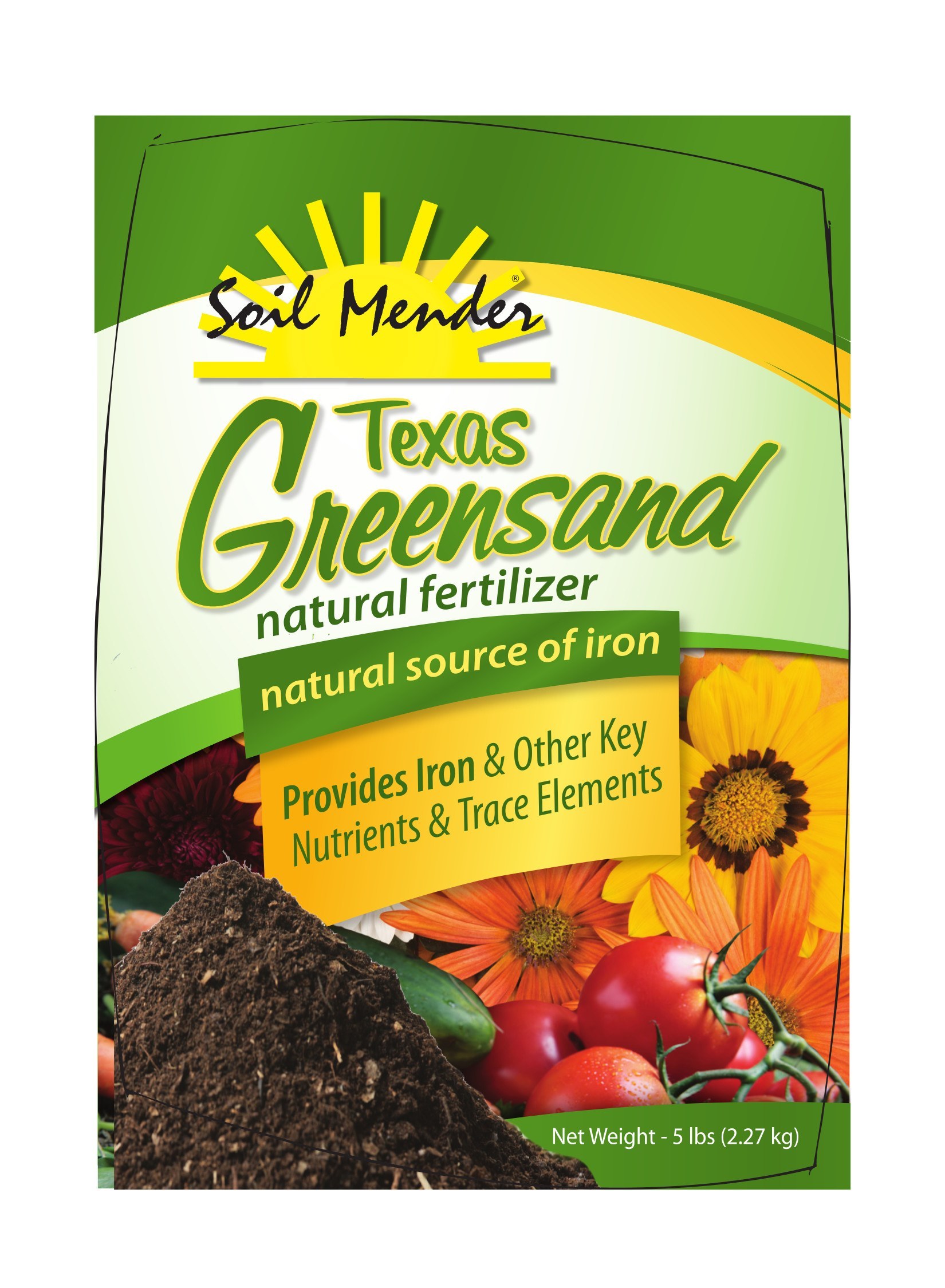
Greensand is an excellent source of trace minerals
We routinely use dry, granular soil amendments for plant food -- every 2 months from February to October. Citrus get an additional feeding the first week of January as well. The key ingredient for trace minerals in this recipe is Greensand. Sign up for our newsletter at the top of the website to receive the free recipe.
Greensand for Trace Minerals
Greensand is glauconite rock from ancient sea bed deposits that is ground to a fine powder and contains about 30 trace minerals.
It is currently mined in PA / NJ and in TX and shipped all over the US. It comes in 5lb bags @ $10 and 40lb bags @ $30 --- contact us for pickup or delivery if you're within our +/-200 mile delivery zone. We find it to be very effective as a broad spectrum source of trace minerals.
Other Trace Mineral resources:
Azomite™
Azomite™ is a kind of volcanic rock that is also powdered and contains approximately 70 trace minerals. It refers to a specific mineral deposit of volcanic ash and marine minerals found and mined in Utah.
It is a pink ore found in Salt Lake City in 1942, and identified as an aluminosilicate mixed with an abundance of minerals and rare earth elements that "appeared to contain all the essential minerals and trace elements in a balanced ratio and naturally chelated."
Azomite™is possibly the better choice for growing plants like pineapples, such as would be found growing in the volcanic soils of Hawaii! It can be substituted for greensand.
Kelp Powder
Kelp Powder is derived from seaweed and is fairly easy to find in feed stores. Not sure how many trace minerals are in the kelp, but it is a good source nonetheless in the absence of the other choices.
Liquid Nutrient foliar sprays
The fastest way to deliver nutrition to a plant is in liquid form. Liquid foliar sprays are the first line of treatment when you have a plant that is suffering from nutrient deficiencies.
We have used Alaska® Fish Fertilizer for years, added to our favorite beer and Epsom salt formula for tropical plants like palm trees. The beer formula provides a few essential trace minerals that green palm trees up quickly.
We've recently discovered Alaska® Pure Kelp Plant Food (liquid kelp concentrate) for more trace minerals than the beer / ammonia formula, and now combine this with the Alaska Fish Fertilizer and Epsom salts -- it's a bit faster to prepare, though maybe not as entertaining.
Alaska® Pure Kelp is available in concentrate form in most garden centers, though it may not be as potent or broad spectrum as some of the ready-made formulas mentioned below.

we only use bee-friendly products
So we mix these 3 things:
(in a hose end sprayer)
liquid fish, liquid kelp & Epsom salts.
Ratios: 2T Alaska Fish, 1T Liquid Kelp per gallon of water, and 1/2 cup of epsom salts per 2' of plant height, up to 2 cups total. Apply the epsom salts about every 3-4 months, apply the liquid formula every week, twice a week if a plant is in trouble.
For the Serious Enthusiast:
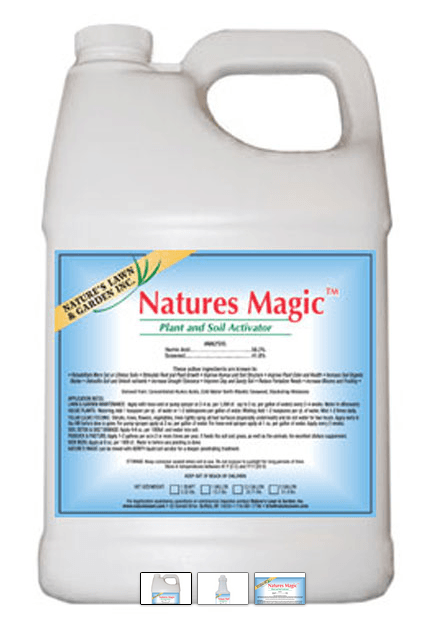
Nature's Magic:
58.2% humic acid & 41.8% seaweed
For the serious enthusiast, another product that we find useful is Nature's Magic™: it is Humic Acid combined with liquid seaweed, or essentially kelp. Humic acid encourages massive new root development.
So that recipe looks like: Alaska Fish®. Nature's Magic™, and Epsom Salts.
The epsom salts is more easily applied as a powder, just top dressing the ground, and combine the fish & the humic acid in liquid form for use in a hose end sprayer.
Read more on Nature's Magic™ here.
Use code GPGX475 to get 10% off.
Need A Simpler, Pre-prepared Foliar Nutrient solution?
here's some links to a few ready-made products:
These products are scientifically prepared, field tested, handy pre-mixes, though likely more costly than sourcing your own ingredients, if you have more than one tree.
GrowScripts
GrowScripts' corporate headquarters are in Howey-in-the-Hills, FL. This one has been tested at one of the major citrus growers with amazing results. I like the transparency of information regarding the ingredients.
Please use the picture / affiliate link to the right if you order the product, but here is a link to the citrus specific spray: http://growscripts.com/foliar-micronutrients/citrus-tree-micronutrient-nutritional.html
Citrus Greening Solution
http://citrusgreeningsolution.com/citrusgreeningt.html
This supplier seems to be in Maitland, FL but doesn't disclose anything about the ingredients that we can find.
Let's Not Let The Bugs Win: Take Action!
A key factor for home owners to remember is that to control or irradicate this disease, diseased citrus MUST be dealt with expediently. We must not ignore sick trees as they harbor the bacteria which psyllids then spread: we all have to work together towards resolution if we expect to win.
Growers on the front lines of this battle tell us that psyllids often attack the leaves at the extremities of the citrus tree first. The bacteria then enters the tree and slowly works its way into the core of the tree and eventually the roots.
These same growers, when they find an obviously diseased tree, prune it heavily removing all affected tissue in an effort to get ahead of the disease and save the tree.

Most of the websites I see regarding greening are still advocating removal of sick trees and say "there is no cure".
Well, the jury is still out on that one. Meantime, either remove a diseased tree or aggressively treat it: but don't ignore it.
Other Useful Resources
CITRUS TREE SYMPTOM CHECKER
UF/IFAS SYMPTOMS EXPLAINED:
Read more about symptoms on the UF/IFAS website here (good pictures)

